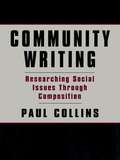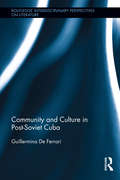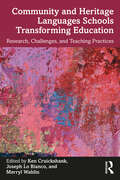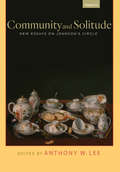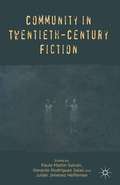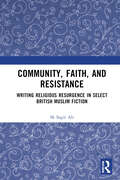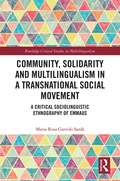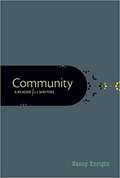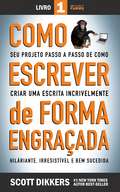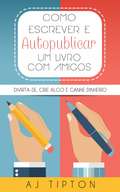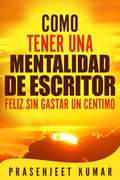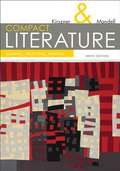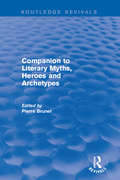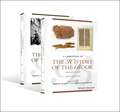- Table View
- List View
Community Writing: Researching Social Issues Through Composition
by Paul S. CollinsCommunity Writing: Researching Social Issues Through Composition employs a series of assignments that guide students to research and write about issues confronting their individual communities. Students start by identifying a community to which they belong and focusing on problems in it, and then analyze possible solutions, construct arguments for them, decide which are likely to succeed, and consider how to initiate action. This is a primary text for first-year composition courses, covering the basics of the writing process. The assignments are recursive. Short writing assignments in each chapter build up to longer papers. Each of the assignment questions is accompanied by a guide to thinking about and writing the assigned paper, followed by a short Focus On reading that provides a brief account of community activism, a media case study, or a notable success story. The longer papers are accompanied by in-class peer reading groups. Each successive peer reading attempts a higher level of conceptual critique. By working together throughout the semester, students create increasingly adept peer groups familiar with all stages of each other's research. The book is carefully structured, but there is plenty of "give" in it, allowing instructors to be flexible in adapting it to the needs of their students and courses. Community Writing: * is distinguished by pedagogy based on a collaborative, process-oriented, service learning approach that emphasizes media critique and field research on community issues chosen by individual students; * answers real student questions, such as: Where do I find articles on my topic? What if evidence contradicts my hypothesis? How do I know if a source is biased?; * is web-savvy--guides students into building their own Web sites, including a unique guide for critiquing the design and veracity of other people's websites; and * is media-savvy--topics include media monopolies, spin control, dumbing down, misleading statistics, the Freedom of Information Act, "crackpot" authors, political rhetoric, and fallacious argumentation.
Community and Culture in Post-Soviet Cuba: Community And Culture In Post-soviet Cuba (Routledge Interdisciplinary Perspectives on Literature)
by Guillermina De FerrariFollowing the disintegration of the Soviet Union, the globalization of Cuban culture, along with the bankruptcy of the state, partly modified the terms of intellectual engagement. However, no significant change took place at the political level. In Community and Culture in Post-Soviet Cuba, De Ferrari looks into the extraordinary survival of the Revolution by focusing on the personal, political and aesthetic social pacts that determined the configuration of the socialist state. Through close critical readings of a representative set of contemporary Cuban novels and works of visual art, this book argues that ethics and gender, rather than ideology, account for the intellectuals’ fidelity to the Revolution. Community and Culture does three things: it demonstrates that masculine sociality is the key to understanding the longevity of Cuba’s socialist regime; it examines the sociology of cultural administration of intellectual labor in Cuba; and it maps the emergent ethical and aesthetic paradigms that allow Cuban intellectuals to envision alternative forms of community and civil society.
Community and Heritage Languages Schools Transforming Education: Research, Challenges, and Teaching Practices
by Joseph Lo Bianco Ken Cruickshank Merryl WahlinThis edited book offers a new look at community and heritage languages schools around the world, providing a comprehensive and nuanced portrait of language education and cultural understanding in and beyond school contexts. Covering research and practice, the contributors survey the global landscape of community and heritage language schools and explore new developments in the field to understand the challenges the schools face and discuss the impact they have on their students and surrounding communities. Chapters address key topics including language development, academic achievement, professional development, learner identity and agency, online learning and teaching disruptions. Contributors highlight learners’ voices throughout, with special attention to overlooked minority language communities and Indigenous voices. Through this wealth of thorough and insightful analysis, the contributors of this book position students of community/heritage languages schools as citizens of a plurilingual world who are central to global change. Abounding with original research, innovative ideas and cutting-edge teaching practices, this book is ideal for courses on multilingualism and language and culture.
Community and Solitude: New Essays on Johnson’s Circle (Transits: Literature, Thought & Culture 1650-1850)
by James May Marilyn Francus John Radner Christine Jackson-Holzberg Lance Wilcox Elizabeth Lambert Christopher Catanese James Caudle Claudia KairoffSamuel Johnson’s life was situated within a rich social and intellectual community of friendships—and antagonisms. Community and Solitude is a collection of ten essays that explores relationships between Johnson and several of his main contemporaries—including James Boswell, Edmund Burke, Frances Burney, Robert Chambers, Oliver Goldsmith, Bennet Langton, Arthur Murphy, Richard Savage, Anna Seward, and Thomas Warton—and analyzes some of the literary productions emanating from the pressures within those relationships. In their detailed and careful examination of particular works situated within complex social and personal contexts, the essays in this volume offer a “thick” and illuminating description of Johnson’s world that also engages with larger cultural and aesthetic issues, such as intertextuality, literary celebrity, narrative, the nature of criticism, race, slavery, and sensibility. Contributors: Christopher Catanese, James Caudle, Marilyn Francus, Christine Jackson-Holzberg, Claudia Thomas Kairoff, Elizabeth Lambert, Anthony W. Lee, James E. May, John Radner, and Lance Wilcox. Published by Bucknell University Press. Distributed worldwide by Rutgers University Press.
Community in Twentieth-Century Fiction
by Paula Martín Salván Gerardo Rodríguez Salas Julián Jiménez HeffernanThis book focuses on the imaginary construction and deconstruction of human communities in modern and contemporary fiction. Drawing on recent theoretical debate on the notion of community (Nancy, Blanchot, Badiou, Esposito), this collection examines narratives by Joyce, Mansfield, Davies, Naipaul, DeLillo, Atwood and others.
Community, Faith, and Resistance: Writing Religious Resurgence in Select British Muslim Fiction
by Sk Sagir AliThis book looks at texts produced before and after 9/11 by novelists with Muslim backgrounds in Britain. It delves into the ways in which the politics of representation have changed in the wake of 9/11 and highlights the conflicts that arise in these coming-of-age narratives between the demands of a liberal individualist lifestyle and those of community, family, and faith. Drawing on the works of Salman Rushdie, Hanif Kureishi, Nadeem Aslam, Qaisra Shahraz, Leila Aboulela, Robin Yassin-Kassab, Zia Haider Rahman, and Ahdaf Soueif, Community, Faith, and Resistance discusses how these authors distinguish between Islam as a religion and Islam as a culture and negotiate complex themes of religion, representation, recognition, and secularism in their works.The volume will be of great interest to scholars and researchers, particularly those focused on literature, politics, cultural studies, South Asian studies, Islamic studies, and decolonial studies, providing valuable insights and fostering deeper understanding in these disciplines.
Community, Solidarity and Multilingualism in a Transnational Social Movement: A Critical Sociolinguistic Ethnography of Emmaus (Routledge Critical Studies in Multilingualism)
by Maria Rosa Garrido SardàCommunity, solidarity and multilingualism in a transnational social movement presents a critical sociolinguistic ethnography of the Emmaus movement that analyses linguistic and discursive practices in two local communities in order to provide insight into solidarity discourses and transnational communication more broadly. Integrating perspectives from a range of disciplines, the monograph seeks to understand the ways in which social movements are maintained across disparate communities grounded in shared cultural referents and communicative practices but not necessarily a shared language. The book focuses on Emmaus, the solidarity movement that emerged in post-war France which brings formerly marginalised people together with others looking for an alternative lifestyle into live-in communities dedicated to recycling work and social projects. The book first offers a historical overview of the Emmaus movement more generally, moving into an account of its development and spread across national and linguistic borders. The volume draws on data from two Emmaus communities in Barcelona and London to analyse the everyday communicative and discursive practices that appropriate and resignify the shared transnational movement ideas in different socio-political, economic, historical and linguistic contexts. Community, solidarity and multilingualism in a transnational social movement considers the social implications of local practices on the situated (re)production and evolution of transnational social movements more generally and will be of particular interest to students and researchers in sociolinguistics, linguistic anthropology, discourse studies, cultural studies, and sociology.
Community-Making in Early Stuart Theatres: Stage and audience
by Helen Wilcox Anthony W. Johnson Roger D. SellTwenty-two leading experts on early modern drama collaborate in this volume to explore three closely interconnected research questions. To what extent did playwrights represent dramatis personae in their entertainments as forming, or failing to form, communal groupings? How far were theatrical productions likely to weld, or separate, different communal groupings within their target audiences? And how might such bondings or oppositions among spectators have tallied with the community-making or -breaking on stage? Chapters in Part One respond to one or more of these questions by reassessing general period trends in censorship, theatre attendance, forms of patronage, playwrights’ professional and linguistic networks, their use of music, and their handling of ethical controversies. In Part Two, responses arise from detailed re-examinations of particular plays by Shakespeare, Chapman, Jonson, Beaumont and Fletcher, Cary, Webster, Middleton, Massinger, Ford, and Shirley. Both Parts cover a full range of early-Stuart theatre settings, from the public and popular to the more private circumstances of hall playhouses, court masques, women’s drama, country-house theatricals, and school plays. And one overall finding is that, although playwrights frequently staged or alluded to communal conflict, they seldom exacerbated such divisiveness within their audience. Rather, they tended toward more tactful modes of address (sometimes even acknowledging their own ideological uncertainties) so that, at least for the duration of a play, their audiences could be a community within which internal rifts were openly brought into dialogue.
Community: A Reader For Writers
by Nancy EnrightNancy Enright's Community: A Reader for Writers explores the theme of writing as community through a variety of readings organized around the communities out of which they arose. The selections-spanning from familial and cultural to economic and artistic-all attest to the text's underlying message that writing, when seen as an act of community, becomes essentially a dialogue, linking the writer with others who have written in the past and will write in the future. Developed for courses in first-year writing, Community: A Reader for Writers includes an interdisciplinary mix of public, academic, and cultural reading selections. It provides students with the rhetorical knowledge and analytical strategies required to participate effectively in discussions about community. Community: A Reader for Writers is part of a series of brief, single-topic readers from Oxford University Press designed for today's college writing courses. Each reader in this series approaches a topic of contemporary conversation from multiple perspectives.
Como Escrever de Forma Engraçada: Seu Projeto Passo A Passo De Como Criar Uma Escrita Incrivelmente Hiláriante (Como Escrever de Forma Engraçada #1)
by Scott DikkersO Manual Definitivo de Redação de Piadas Aprenda a escrever comédias e piadas com uma fórmula simples que você pode usar agora para criar suas próprias piadas. Veja por que os revisores da Amazon chamam o livro Como Escrever de Forma Engraçada de: "Um dos melhores livros sobre escrita humorística". O autor Scott Dikkers mostrará como escrever piadas. Ele é um escritor, fundador do site de humor The Onion, autor de humor nº 1 do New York Times e de best-sellers nº 1 da Amazon e cartunista de sucesso. Scott criou e lidera o centro de treinamento "Writing with The Onion" na famosa Second City, em Chicago. Seus alunos foram contratados para trabalhos de comédia na TV e ganharam dezenas de prêmios Emmy. Scott Dikkers é consultado por grandes empresas de entretenimento como NBC, Comedy Central e Pixar. Este guia fácil de seguir apresenta um sistema claro e uma fórmula simples de como escrever uma piada que trará grandes risadas de tirar leite do nariz. De forma confiável, você vai aprender... • As três maneiras seguras de gerar textos engraçados • Os 11 "Filtros Engraçados" e como usá-los para escrever piadas • O segredo para se livrar do bloqueio de escritor - permanentemente • E muitas outras dicas, truques e técnicas de escrita humorística Se você já se perguntou como pode começar a escrever e contar piadas para seus amigos e familiares, ou talvez, como adicionar humor à sua escrita, piadas em um discurso ou como adicionar humor à sua apresentação, este livro explica de forma simples a fórmula utilizada pelos profissionais na sua escrita. Como Escrever de Forma Engraçada é para você, se você deseja encontrar um emprego de escritor de comédia ou apenas quer aprender a contar uma piada.
Como Escrever e Autopublicar um Livro com Amigos
by Aj Tipton Caroliny DellaparteVocê está preparado para se divertir e ganhar dinheiro autopublicando com os amigos? A escrita pode ser um trabalho difícil e solitário, se for feito sozinho. Mas não precisa ser assim. As autoras apresentam um método de autopublicação que é colaborativo e divertido. Se você está começando no mundo da autopublicação, este é o guia perfeito para você! Como Escrever e Autopublicar um Livro com Amigos é um modelo indispensável para transformar suas ideias em obras publicadas, salvando-o da frustração e solidão de tentar fazer tudo sozinho. AJ Tipton é uma equipe de escritoras bem-sucedidas e está disposta em deixar você conhecer os seus segredos, as suas lições e as dicas aprendidas sobre esse mundo cativante da escrita. Este livro inclui: + A melhor maneira de escolher o seu coautor; + Como escolher um gênero e subgênero; + Um método para criar uma história que vende; + Um guia de contratação de freelances para os trabalhos de edição, de criação da capa, de traduções, dentre outros; + Dicas de formatação e edição; + Plataformas de publicação: Amazon, Kindle Unlimited, Nook etc; + As vantagens e desvantagens de traduzir o seu livro; + Como usar o seu orçamento; + Dicas para comercializar seus livros com sucesso; + O poder das mídias sociais; + Como manter sua parceria, compartilhar tarefas e continuar a escrever juntos; E muito mais! Se você está pronto para ser criativo e escrever com os amigos, leia este guia passo a passo para iniciar sua jornada pela autopublicação agora!
Como Escrever e Publicar um Romance
by Susan Palmquist Jo MaiaVocê já sonhou em escrever seus próprios romances? Na segunda edição de Como Escrever um Romance, você aprenderá dicas e truques para iniciar suas estórias, finalizá-las e então submetê-las para algum agente ou editora. Você aprenderá também a como ter ideias para suas estórias, como planejar seu romance, a importância dos três primeiros capítulos, a como criar conflitos e aumentar a carga emocional deles, como criar personagens e diálogos que envolvam seus leitores; como criar tensão sexual; como organizar um pacote de submissão que se destaque entre tantos outros. Tomará conhecimento de lugares onde você pode submeter seu manuscrito. Neste exemplar você também encontrará exercícios de escrita que ajudarão a encontrar inspiração. Se você sempre desejou aprender o ofício de escrever romances, mas nunca teve tempo ou dinheiro para fazer um workshop, este livro oferece todos esses elementos para dar os primeiros passos.
Como Ser Um Escritor Mais Feliz Sem Gastar Um Centavo
by Prasenjeet KumarDo autor da série “Publicação Independente Sem Gastar Um Centavo”, chega este manual com dicas práticas e conselhos que podem lhe transformar em um autor mais feliz antes que se torne um dos mais vendidos. Destilando sua experiência prática de quem disponibilizou mais de 50 livros em sete idiomas em todas as plataformas de livros eletrônicos, Prasenjeet Kumar enfrenta todas aquelas forças que conspiram para impedir você – o escritor – de se tornar um grande contador de histórias. Dúvidas, poucas vendas, rejeições, excesso de “participação em oficinas”, vício em vendas e a sensação de que os leitores não se importam com seus livros, esses são alguns dos demônios que podem deixar os escritores infelizes, desesperados e desanimados. Com grande discernimento pessoal e profissional, Prasenjeet Kumar lhe ensina a exorcizar esses fantasmas e se transformar em um autor confiante. Então venha realizar seus sonhos de escritor, com uma mentalidade mais feliz e, é claro, Sem Gastar Um Centavo.
Como Ser Um Feminista: Um Guia Para Homens Lutarem Pelos Direitos e Igualdade das Mulheres
by Steve ChiabaUm guia para homens sobre o feminismo moderno. Você já foi vítima de violência, ódio, assédio ou sofrimento por causa do seu gênero? Ser feminista ou praticar ideais feministas significa lutar pelas coisas que importam. Coisas como sálários iguais, ser tratada com respeito, licença maternidade, direitos de reprodução, violência doméstica, entre outros. Se quiser aprender mais sobre lutar por seus direitos e ajudar na luta pelos direitos das mulheres em todo lugar, então este guia é para você. - Aprenda a ser feminista. - Aprenda a lutar por seus direitos. - Lute por igualdade e salários iguais. - E muito mais! Aprenda como estar no lado certo da história ajudando a humanidade onde ela mais precisa de você!
Como Ser Uma Feminista: Um Guia Para Mulheres Lutarem Por Seus Direitos e Igualdade
by Lauren AlexaVocê já foi vítima de violência, ódio, assédio ou sofrimento por causa do seu gênero? Ser feminista ou praticar ideais feministas significa lutar pelo que importa. Coisas como salários iguais, ser tratada com respeito, licença maternidade, direitos de reprodução, violência doméstica, entre outros. Se quiser aprender mais sobre lutar por seus direitos e ajudar a lutar pelos direitos das mulheres em todo lugar, então este guia é para você. - Aprenda a ser feminista. - Aprenda a lutar por seus direitos. - Lute por igualdade e salários iguais. - E muito mais! Aprenda como estar no lado certo da história ajudando a humanidade onde ela mais precisa de você!
Como Tener Una Mentalidad De Escritor Feliz Sin Gastar Un Centimo
by Prasenjeet Kumar Bernarda Rojas ValenzuelaSé un autor más feliz antes de convertirte en uno de los más vendidos El autor número uno de la categoría "Autoedición de la serie SIN GASTAR UN CENTIMO", llega este manual de consejos prácticos que pueden hacerte un escritor más feliz antes de convertirte en uno de los más vendidos. Destilando su experiencia práctica y en la publicación de más de 50 libros en siete idiomas en todas las plataformas de libros electrónicos, Prasenjeet Kumar se enfrenta a todas las fuerzas que conspiran para evitar que usted -el escritor- se convierta en un gran narrador. Las dudas sobre uno mismo, la falta de ventas, los rechazos, el "exceso de trabajo", la adicción a las ventas y el sentimiento de que los lectores no se preocupan por sus libros son algunos de los demonios que pueden hacer que los escritores sean infelices, desesperados y abatidos. Con una gran visión personal y profesional, Prasenjeet Kumar le dice cómo exorcizar esos fantasmas y entregarse a un autor confiable. Así que ven, date cuenta de que tu autor sueña, con un estado de ánimo más feliz y, por supuesto, SIN GASTAR UN CENTIMO.
Como criar ninos bilingues (Raising Bilingual Children Spanish edition): Una guia practica
by Maritere Rodriguez BellasA how-to guidebook that teaches parents how to instill a second language in their children.Hoy día para mayoría de padres inmigrantes en Estados Unidos criar niños bilingües no es una opción o decisión, más bien es un estilo de vida. Aun así, enseñarles el idioma materno pasa a segundo plano con tal de asegurarnos que manejen a la perfección el inglés para que triunfen en la escuela y obtengan posiciones de liderazgo en el trabajo. Lo que es más, la tarea de enseñarles dos (o más) idiomas puede ser abrumadora y a menudo nos preguntamos por dónde empezar. CÓMO CRIAR NIÑOS BILINGÜES es una guía fácil y de pasos prácticos para padres de niños de toda etapa y edad. La autora y experta en temas para las familias inmigrantes, Maritere Rodriguez Bellas nos ayuda a contestar preguntas como: ¿Qué hago si mi hijo de cinco años no quiere hablar español en la casa? Mi esposo no habla coreano, ¿cómo encontramos un punto común para criar a nuestros hijos con dos idiomas? Mi hija tiene dos años y no habla ninguno de los dos idiomas que hablamos en casa. ¿Debería preocuparme? Sin importar cuál sea tu idioma -español, filipino, coreano, mandarín, o francés- es normal que queramos que nuestros hijos se comuniquen en nuestro idioma. CÓMO CRIAR NIÑOS BILINGÜES es la guía perfecta para padres que buscan consejos y dirección sobre cómo lidiar con los retos y alegrías de criar niños bilingües.
Como escrever os seus próprios contos
by Miguel D'AddarioDescrição do livro: CONTEÚDOS - Objetivos Narrar diferentes textos literários. Perspetivas, diálogos, espaço, tempo. Ter conhecimento das exigências básicas do conto enquanto género. Descobrir a estrutura simples de introdução, desenvolvimento e desenlace. - Metodologia Proposta de análise de determinados contos. Participação ativa sobre as propostas apresentadas. As propostas de trabalho são dirigidas da perspetiva descritiva uma vez que dessa forma pretende desencadear diferentes tipos de textos. O curso é dividido pelas seguintes partes: Análise de Contos. Estrutura. Género. Espaço e tempo. Personagens. Exercícios elaborados pelos alunos do curso. Escrita e produção textual dos próprios alunos. - Programa Primeira abordagem do conceito de conto. O escritor enquanto emissor e recetor. Leitura e análise de um conto. A invenção de um mundo possível. Elaboração de uma ficção a partir de uma ideia quotidiana. Proposta de escrita. A importância da experiência própria e da experiência conhecida como motor impulsionador para a escrita criativa. Ligação entre recordações (as referências próximas e as conhecidas). Proposta de escrita. A manipulação da realidade e da própria experiência: elaboração de contos. Proposta de escrita. As perspetivas e o narrador. Análise de contos. Proposta de escrita. O conto, o conto breve. Proposta de escrita. Regras passo a passo para a elaboração de contos. Quadros sinóticos.
Como escrever um ebook em um mês: Passos e dicas para ter Foco, Motivação e ser Criativo
by Beautrice NorfolkVocê quer escrever um livro sem muito esforço no menor tempo possível? Você quer escrever um romance de forma mais rápida e eficaz? Você sabia que o dictation software pode ajudá-lo a escrever seu livro até 3 vezes mais rápido? Se você respondeu sim, então este livro é para você! Se você quer aprender a escrever seu romance falando, este livro também é para você! Este guia apresenta estratégias extraordinárias para ditar seu romance tudo a partir do conforto da sua sala de estar sem tocar em um teclado! Aqui estão os tópicos deste livro: •Como começar •Como se preparar e fazer seu esboço •O melhor discurso para aplicativos de texto •Como usar o dictation software para publicar um romance •+ MUITO MAIS! -> Role até o topo da página e clique em adicionar ao carrinho para comprar instantaneamente Aviso Legal: Este autor e detentor de direitos não fazem reivindicações, promessas ou garantias sobre a exatidão, integridade ou aplicação do conteúdo deste livro, e se isenta expressamente da responsabilidade por erros e omissões nos conteúdos nele contidos. Este produto é apenas para referência. Gênero: COMPUTADORES / Documentação e Redação Técnica Gênero Secundário: NÃO FICÇÃO JUVENIL / Linguagem / Composição e Escrita Criativa Língua: Português Brasil
Como escrever um livro - Superar o bloqueio
by Nuno Filipe Oliveira E Sá Da Costa Lopes Clara TiscarQueres escrever? Já padeceste de um "bloqueio de escrita"? Tens medo quando olhas para a página em branco? Este livro é para ti caso te identifiques com as seguintes situações: Quero começar a escrever, mas não encontro o momento certo. Estou enrascado no meu livro, não sei como seguir em frente. Sei a história que quero contar, mas não a consigo escrever. Não bloqueei, mas falta-me motivação continuar a escrever o meu livro. Conselhos e técnicas para superar o infame bloqueio de escritor. Ferramentas e estratégias para não voltares a bloquear.
Como escrever uma postagem de blog que venda
by Richard G Lowe Jr Nícolas PoloniEscrever um artigo que induza o leitor a tomar a decisão de fazer algo é uma arte. Esse é o principal foco do livro. Você aprenderá a criar um artigo que deixe o leitor interessado, instigado, informado e ainda o faça tomar uma decisão ao terminar a leitura.
Compact Literature: Reading, Reacting, Writing
by Laurie G. Kirszner Stephen R. MandellLearn how to write about literature the convenient, affordable way! COMPACT LITERATURE: READING, REACTING, WRITING helps you succeed in class and make literature a part of your life. Combining a broad selection of literature with time-proven writing instruction, this reader-friendly text walks you step-by-step through the entire research and writing process, helping you learn to craft literary analyses and arguments. Demonstrating that writing about literature is a process of discovery, examination, and debate, the text includes a comprehensive guide to writing about literature with full coverage of critical thinking and argument. Sample chapters on fiction, poetry, and drama involve you in the variety and diversity of literature through brief, accessible works that showcase representative selections from four popular contemporary literary subgenres.
Companion to James Welch's The Heartsong of Charging Elk
by Arnold KrupatJames Welch was one of the central figures in twentieth-century American Indian literature, and The Heartsong of Charging Elk is of particular importance as the culminating novel in his canon. A historical novel, Heartsong follows a Lakota (Sioux) man at the end of the nineteenth century as he travels with Buffalo Bill’s Wild West show; is left behind in Marseille, France; and then struggles to overcome many hardships, including a charge for murder. In this novel Welch conveys some of the lifeways and language of a traditional Sioux. Here for the first time is a literary companion to James Welch’s Heartsong that includes an unpublished chapter of the first draft of the novel; selections from interviews with the author; a memoir by the author’s widow, Lois Welch; and essays by leading scholars in the field on a wide range of topics. The rich resources presented here make this volume an essential addition to the study of James Welch and twentieth-century Native American literature.
Companion to Literary Myths, Heroes and Archetypes: Heroes And Archetypes (Routledge Revivals)
by Trista Selous Pierre Brunel Wendy Allatson Judith HaywardFirst published in French in 1988, and in English in 1992, this companion explores the nature of the literary myth in a collection of over 100 essays, from Abraham to Zoroaster. Its coverage is international and draws on legends from prehistory to the modern age throughout literature, whether fiction, poetry or drama. Essays on classical figures, as well as later myths, explore the origin, development and various incarnations of their subjects. Alongside entries on western archetypes, are analyses of non-European myths from across the world, including Africa, China, Japan, Latin America and India. This book will be indispensable for students and teachers of literature, history and cultural studies, as well as anyone interested in the fascinating world of mythology. A detailed bibliography and index are included. ‘The Companion provides a fine interpretive road map to Western culture’s use of archetypal stories.’ Wilson Library Review ‘It certainly is a comprehensive volume… extremely useful.’ Times Higher Education Supplement
Companion to the History of the Book (Blackwell Companions to Literature and Culture #159)
by Jonathan Rose Simon EliotThe celebrated text on the history of the book, completely revised, updated and expanded The revised and updated edition of The Companion to the History of the Book offers a global survey of the book’s history, through print and electronic text. Already well established as a standard survey of the historiography of the book, this new, expanded edition draws on a decade of advanced scholarship to present current research on paper, printing, binding, scientific publishing, the history of maps, music and print, the profession of authorship and lexicography. The text explores the many approaches to the book from the early clay tablets of Sumer, Assyria and Babylonia to today’s burgeoning electronic devices. The expert contributions delve into such fascinating topics as archives and paperwork, and present new chapters on Arabic script, the Slavic, Canadian, African and Australasian book, new textual technologies, and much more. Containing a wealth of illustrative examples and case studies to dramatize the exciting history of the book, the text is designed for academics, students and anyone interested in the subject.
